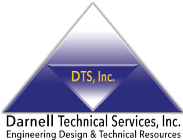Today we take a closer look at CFD, one of the most interesting tools at the disposal of design engineers. Keep reading to learn more.
What Is CFD?
CFD stands for Computational Fluid Dynamics. As the name implies, CFD allows design engineers to simulate the motion of fluids using a computer.
Here, the term “fluid” isn’t limited to liquids. In fact, CFD is often used to simulate and analyze airflow patterns in everything from HVAC systems to weather phenomena.
Some of the most common software applications for CFD are Autodesk CFD, openFOAM, and ANSYS Fluent/CFX.
CFD Doesn’t Replace Physical Testing
It’s worth noting that CFD doesn’t replace physical testing, which remains a necessary part of the engineering design process. Rather, CFD can be considered a powerful complement to real-life testing that helps engineers save time and makes it easier to spot design flaws.
Furthermore, CFD can be an invaluable tool for hypothetical scenarios that are hard to explore with physical tests.
CFD simulations are usually performed on CPUs (Central Processing Units), or the central processor of a computer. However, from the 2010s, these simulations are also performed on GPUs (Graphics Processing Units). This part of the computer was originally designed to render graphics, but now it’s also used to accelerate calculations that involve vast amounts of data.
More Tips and Ideas About Project Management
Project management is an exciting discipline with myriad real-world applications. Below are some previous posts you can read to learn more about this fascinating topic.
- Some essential terms to understand project management (part 1)
- Project Management for Everyone: 3 Tools You Can Start Using Today
- Do good design engineers make good project managers?
- 3 Reasons to choose a career in engineering design
- How is engineering design different from other types of design?
Darnell Technical Services is an engineering design firm with extensive experience in a vast array of projects. Our headquarters are located in Santa Ana, California, and we have an office in Las Vegas, Nevada.
Contact us today by telephone (714-285-0082 (CA), 702-945-2899 (NV)) or through our social media accounts on Facebook, Twitter, and LinkedIn to learn more about all the technical instruments and materials we put at your disposal.








